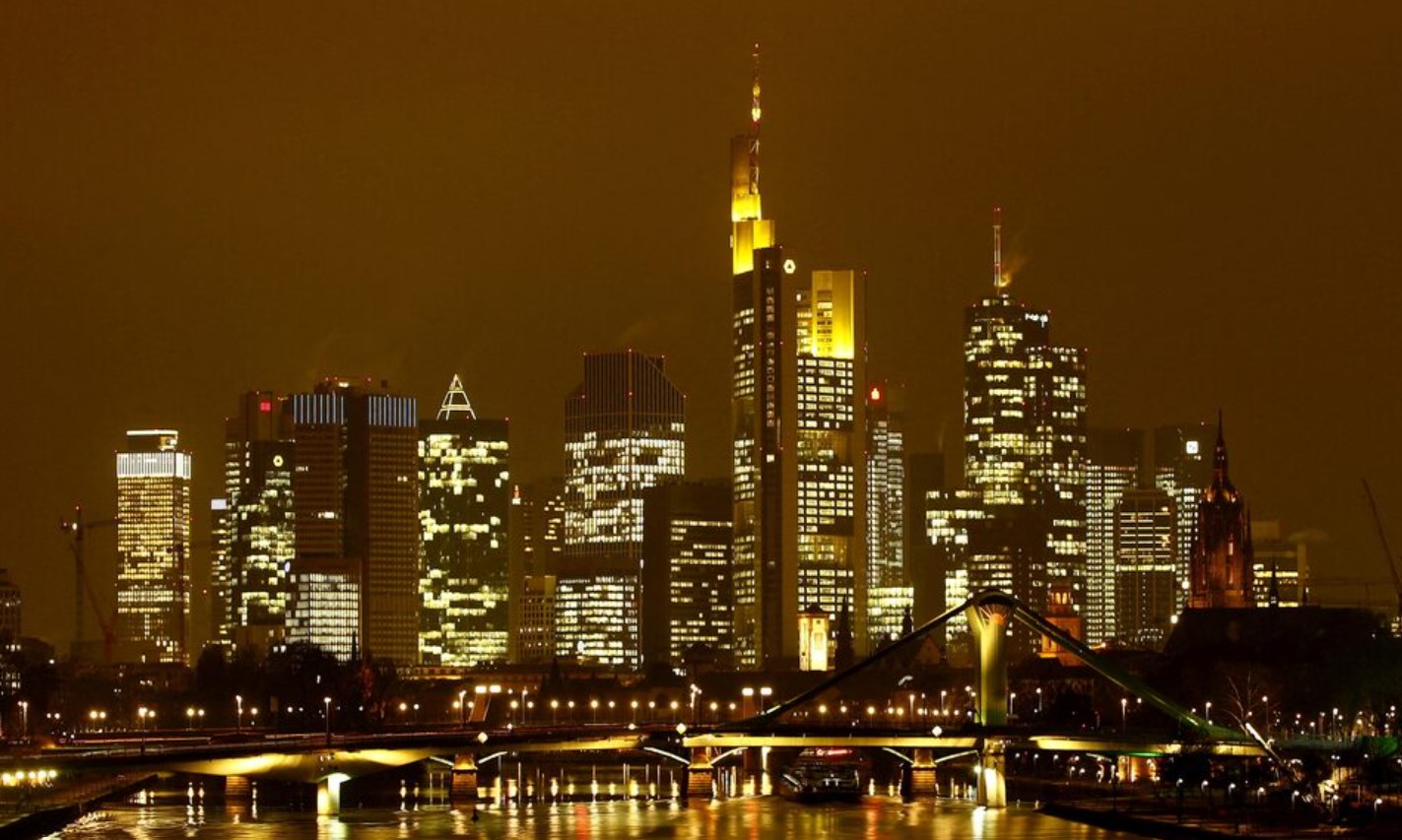World
Europe’s Far Right Has Roadmap for a World in Which Trump Wins

Europe’s experiences — over the past century and the past decade — hold crucial lessons for how events could play out if Donald Trump secures a return to the White House.
Trump is part of a wave of politicians across the western world that have brought far-right rhetoric and policies into the political mainstream. While each one adapts to their political and social situation, they are tuned in to a broader movement characterized by conservative values and trenchant opposition to immigration.
“There’s an ideological solidarity between the European far right and Donald Trump,” says Bernard Guetta, a liberal member of the European parliament.
That’s borne out by the way Europe’s most successful far-right leaders have been reaching out to the US candidate, with Hungary’s Viktor Orbán wishing him good luck in the election and Italian Prime Minister Giorgia Meloni aiming to establish a backchannel to a possible Trump White House through Elon Musk.
Donald Trump welcomes Polish President Andrzej Duda at Trump Tower in New York, in April. Photographer: Jabin Botsford/The Washington Post/Getty Images
Even when far-right campaigns fail to take power, they often leave their mark on the political landscape, as witnessed by the hardening immigration policies of mainstream parties on both sides of the Atlantic. With control of the legislature in a country like Hungary, they can reshape a country for good.
“It’s not a path that is inevitable,” says Zsuzsanna Végh, a political analyst at the German Marshall Fund in Berlin who studies threats to democratic norms. “But to avoid it, institutions, politicians and citizens need to recognise the measures that lead in this direction and acknowledge they’re not ad hoc challenges to democracy but very often planned in a systemic way.”
We analyzed election results for about two dozen populist parties over the past 20 years to chart their fortunes and cross-walked that data with the Chapel Hill Expert Survey, which uses a network of hundreds of academics to measure their degree of extremism.
Combining these data sets produces a picture of the recipes that have proved most successful and offers clues as to how these parties react as they come closer to the reality of government. It also reveals how staying in power has sometimes proved challenging.
Where Far-Right Populists Have Gained (and Lost) Power
Vote share in national parliamentary elections since 2004
Sources: ParlGov; national election results
Note: Bolded parties are currently or were formerly head of government. The Sweden Democrats are not considered to be in power, but they do support the center-right ruling coalition in votes.
*While the Freedom Party of Austria came first in recent elections, no party was willing to enter coalition talks, so the People’s Party and the center-left Social Democrats are in negotiations to form a government without it, as of Oct. 25.
A spokesman for Trump declined to comment.
To be sure, the US presidential system poses a different set of challenges and opportunities from the parliamentary structures that are prevalent across most of Europe.
While Fidesz in Hungary and Brothers of Italy lead their respective governments, the far right came first in the latest national elections in both the Netherlands and Austria and saw their power constrained by alliances of opponents. The Alternative for Germany, or AfD, was blocked from governing after winning elections in the eastern state of Thuringia.
The so-called safeguards in France’s presidential system have, so far, prevented Marine Le Pen from taking power in Paris.

Magazines on display during an Alternative for Germany (AfD) regional election rally in Brandenburg, in September. Photographer: Krisztian Bocsi/Bloomberg
Support for the far right isn’t on the rise everywhere: Law and Justice failed to win an outright majority in the 2023 election in Poland after eight years in power, making way for a pro-European coalition led by Donald Tusk, a former premier who also served as president of the European Council. But even he is pushing for a tougher European Union line on undocumented migration.
These ideas aren’t universally popular and can be taken too far. Europe is full of relatively small right-wing parties that have never really broken through. Groups like People’s Party Our Slovakia and Greece’s Golden Dawn are now effectively defunct after schisms or scandals.
Others are trundling along below 10% of the vote. Although that’s also the level that allowed Meloni, the Sweden Democrats or the Finns to stay in the game before they suddenly saw support surge.
Some, like France’s National Rally and Reform UK, have garnered impressive support at the polls but been kept out of office by establishment forces.
Half of Parties Analyzed Have Yet to Secure Political Power
Vote share in national parliamentary elections since 2004
Sources: ParlGov; national election results
Note: “Reform UK and predecessors” refers to the UK Independence Party (UKIP), Brexit Party and Reform UK, all led by Nigel Farage.
*In the 2022 election, Jobbik ran as part of the United Hungary coalition, which scored 34.4% of the votes; but according to the latest poll by Publicus Institute published on Oct. 18, only about 1% of voters still support the party.
Conventional wisdom says political success is all about the economy. Increasingly, though, far-right groups have turned that rule on its head. They’ve achieved breakthroughs by opposing immigration, and that’s the issue that most closely connects them.
It’s a line that can be drawn from the 2015-16 migration crisis from Syria that engulfed Europe, through the UK’s Brexit referendum and Trump’s persistent appeal.
Orbán, who built a fence on Hungary’s southern border, is backing Trump over Kamala Harris on Nov. 5. Meloni struck a deal to have irregular migrants processed in Albania and cultivated ties to Musk, the billionaire Tesla owner whom Trump has tapped for a role in his administration.

Giorgia Meloni meets with Elon Musk at Chigi Palace in Rome in June 2023. Source: Us Palazzo Chigi/Filippo Attili/ANSA/ZUMA Press/Shutterstock

A security control post beyond a razor wired topped security fence at the Hungarian-Serbian border near Roszke, Hungary. Photographer: Akos Stiller/Bloomberg

The migrant center built by the Italian government in Gjader, Albania. Photographer: Antonio Sempere/Europa Press/Getty Images
Giorgia Meloni meets with Elon Musk at Chigi Palace in Rome in June 2023. Source: Us Palazzo Chigi/Filippo Attili/ANSA/ZUMA Press/Shutterstock A security control post beyond a razor wired topped security fence at the Hungarian-Serbian border near Roszke, Hungary. Photographer: Akos Stiller/Bloomberg The migrant center built by the Italian government in Gjader, Albania. Photographer: Antonio Sempere/Europa Press/Getty Images
Beyond that, the European parties have widely diverging views on a range of hot-button issues and Vladimir Putin’s Russia in particular, as seen in the Chapel Hill Expert Survey data.
While some scores, like on attitudes toward the Kremlin and the EU, are from a limited 2023 survey conducted after Russia invaded Ukraine, most are from the last full survey in 2019.
Those results are still insightful since “most parties are fairly consistent over time on the key dimensions, such as economic left-right and socio-cultural issues,” said Seth Jolly, chair of the political science department at Syracuse University and the co-principal investigator of the Chapel Hill Expert Survey.
Out of the political parties analyzed here, Orbán and Meloni offer two contrasting models for how far-right leaders can operate.
She has tacked to the center since taking power in a bid to keep both her core voters and Italian bondholders onside. But she’s also cultivated her relationship with Musk and sees him as a conduit to Trump if he wins, according to an Italian official with knowledge of her thinking.
While her relatively swift emergence means the Chapel Hill Expert Survey study doesn’t capture a significant number of data points, it does show a major shift toward the mainstream, in particular on the EU.
That’s a strategy that tracks Le Pen’s evolution over a longer period of time as she’s courted the more moderate voters she needs to win power in France. However, structural obstacles have kept her from the Élysée Palace in Paris. Despite winning the most votes in the first round of voting earlier this year, a cross-party firewall managed to hold off the National Rally in the second round.
Le Pen’s Successful Normalization Strategy
In an attempt to appeal to a broader voter base, the National Rally has somewhat moderated its discourse over the past decade. Change in positions since 2006.
Source: Chapel Hill Expert Survey
Note: Most recent data available.
Orbán, by contrast, has doubled down on his more extremist, confrontational approach since winning a super majority in 2010. Although he no longer has such an absolute grip on power in Hungary, Orbán’s clear majority means there’s no need to compromise with coalition partners.
The party’s stances on social issues — like gay rights and gender equality — as well as immigration and European integration are just a few that became more extreme in the ensuing years, according to the Chapel Hill Expert Survey data.
Fidesz’s Shift to the Right After Gaining Power
In his 14 years in office, Orbán’s political agenda has become more radical, fully embracing “illiberal democracy”. Change in positions since 2006.
Source: Chapel Hill Expert Survey
Note: Most recent data available.
The differences between the Orbán and Meloni models can also be seen in how their parties talk about the key issue of immigration, in particular. A Bloomberg Economics sentiment analysis of thousands of European Parliament speeches found that while Brothers of Italy MEPs have used far less negative rhetoric than many other far-right parties, members of Hungary’s Fidesz have used increasingly incendiary language in recent years.

Viktor Orbán and Marine Le Pen before a meeting of Leaders of European conservative and right-wing parties at the “Warsaw Summit” in December 2021. Photographer: Wojtek Radwanski/AFP/Getty Images
The strength of Orbán’s position and his illiberal style of government, with checks and balances undermined, means that he is most likely the closest analogue to the situation that Trump would find himself in if he returns to the White House next year.
“A president who has authoritarian tendencies would seek to centralize power,” says Végh from the German Marshall Fund. “A Trump administration could look at the European far right when it comes to creating an ideological justification for why it’s necessary.”










